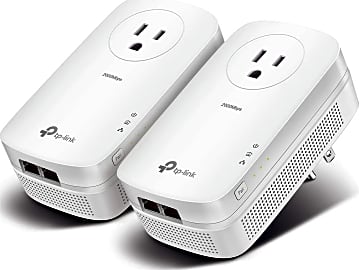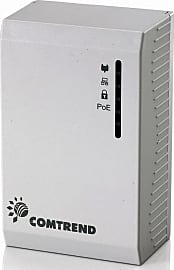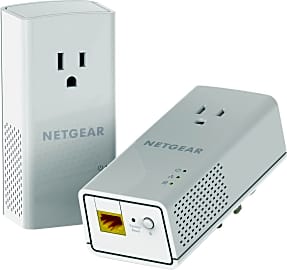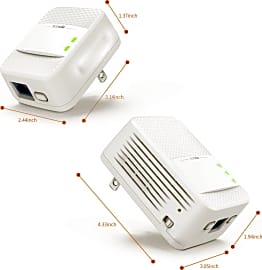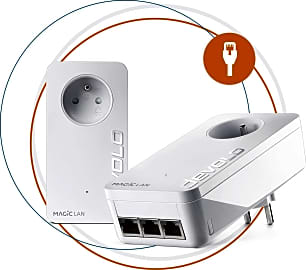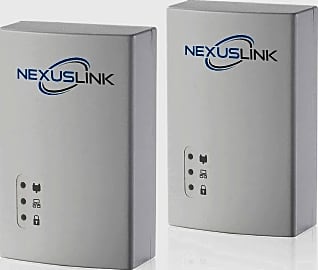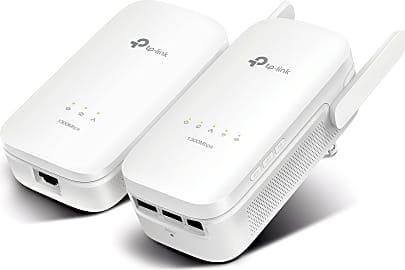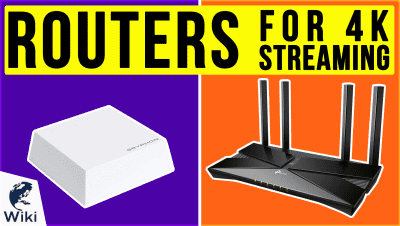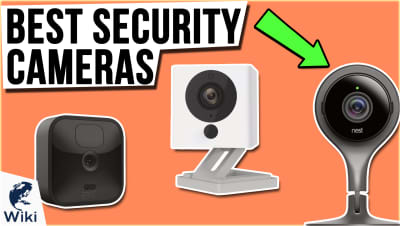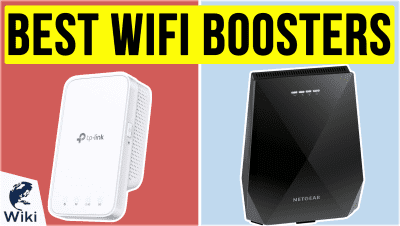The 10 Best Powerline Network Adapters

This wiki has been updated 43 times since it was first published in April of 2015. If you're having trouble with wireless connectivity, consider a powerline adapter that can work instead of, or as a complement to, any existing network. They simply plug into your AC power lines via a regular socket and offer consistent speeds, reliability, and security, without the need to run Ethernet cables everywhere. We've listed the best models for home and office use. When users buy our independently chosen editorial picks, we may earn commissions to help fund the Wiki.
Editor's Notes
December 31, 2020:
I wanted to add some more options with power-over-ethernet or power outlet passthrough, and also add some options with faster speeds. As previously mentioned, real-life speeds rarely reach advertised speeds, though, this depends on your service, and the network infrastructure, as well as the way you connect to the internet. If you’ve been using wireless, then switching to wired internet should give you a noticeable speed boost. The type of router and WiFi channel you use can also affect speed, with the latest standard 802.11ac – on the 5-GHz band allowing up to 866.7 Mbps. Theoretically, wired ethernet can offer multi-gigabit speeds, and there are people who have connections like this, but it's superfluous at this point in time – 4K streaming, for instance, only needs around 30 Mbps. In the US, the current ISP with the fastest average speeds is Google Fiber, which advertises speeds of up to 1000 Mbps (1 Gbps).
Wired ethernet is virtually always a faster and more reliable solution than wireless, and powerline adapters are a great way to avoid messy cables, but you may lose speed compared to wired ethernet cables. Getting adapters which advertise higher powerline speeds are a way to mitigate that, which is why I’ve taken out slower options like the Linksys PLEK500 from this list. Some of these options also double as WiFi extenders on both 2.4- and 5-GHz bands, though they aren’t WiFi Extenders, which we have a separate list for. Either way, they’ll give you more stable connections, and are great for streaming multiple devices in your home. Also remember to use ethernet cables with a category that doesn’t slow your speed down – if you don’t know, your best option here is to just go for cat 6 cables.
August 15, 2019:
Powerline adapters are great for places where there's already a glut of wireless connections crowding the airwaves, and they're generally pretty simple to install; you don't usually have to do much more than plug them into a router. For home users, there are two main companies to pay attention to: TP-Link and Extollo. TP-Link has a lot of options to choose from, but the AV1300 (and its Wi-Fi-enabled close relative the AV1350) is the simplest to get working. Extollo's system is a touch cheaper, and can be significantly faster, but its user interface isn't very friendly and it helps to have a little deeper understanding of the system and the devices connected to it, so we would mostly recommend it to those who are relatively tech-savvy.
Both of those brands will work great for business use, as well, but for specialized purposes like security cameras we wanted to point out the Comtrend specifically. It provides power-over-Ethernet, which not many do. And no matter whether it's for work or play, remember that none of these will actually increase speeds above what you're paying for from the ISP; in fact, if they're not configured properly, a powerline network can actually hinder bandwidth slightly, so pay attention to speed and latency tests and don't be afraid to tweak some settings to fit your situation.
How Powerline Networking Works
It's the ideal way to extend an existing network to other areas of your home or business, without having to run more Ethernet cables or get a more powerful router.
Powerline networking is a communication protocol that allows you to use electrical wiring to carry broadband data between devices. It's the ideal way to extend an existing network to other areas of your home or business, without having to run more Ethernet cables or get a more powerful router. A router or modem is connected to an adapter, which is then plugged into a standard wall socket. Another device somewhere else is connected to a similar adapter and also plugged into a wall socket. Once both adapters are plugged in, they make a network connection via the electrical wiring.
Electrical wiring in the common home can support a number of frequencies and signal types. Electricity is transferred at 50 and 60 Hz. Another signal can be sent along the same wire, at the same time as the electrical current as long as it running at a different frequency. If you send another signal at a different frequency across the same wire, it won't interfere with, or be affected by, the electricity. Your internet data gets transmitted at 3 kHz or higher, which means neither signal has any chance of interfering with the other.
While you may have only started hearing about powerline networking recently, it isn't a new technology. The power companies have been using it since the 1920s to send signals to electric meters. This is how they know to switch to off-peak rates at different times.
Powerline Vs. WiFi
One might think that with the prevalence of wireless internet, there would be no need for anything that makes use of a wired connection, but powerline networking actually has a number of benefits over Wi-Fi.
They don't require you to mess around with confusing router settings or set up a password-protected wireless local area network.
First and foremost is connection quality. Unlike with Wi-Fi, your signal strength won't decrease as you get farther away from the signal source. Your network strength will be just as good 50' away from your internet source as it is 5' away. A powerline network is also more stable than Wi-Fi and will never drop a connection unless your internet goes out completely. Faster speeds are another huge advantage of powerline networks. Both Wi-Fi router companies and powerline network companies tout speeds considerably higher than any user will ever experience, but actual users of powerline networks have seen speeds upwards of 500 Mbps, as opposed to Wi-Fi where it is rare for any user to experience real life speeds over 100 Mbps.
Security is another area where a powerline network is more advantageous than a WLAN. It is easier for a hacker to access your network when the signal is being broadcast to areas outside of your home, and let's face it, most of us try to buy the strongest router possible to ensure we get a good Wi-Fi signal in every nook and cranny of our home. In order to gain access to a powerline network, a hacker would have to physically connect to one of your wall outlets.
Powerline networks are also easier to set up as you will find out in the next section. They don't require you to mess around with confusing router settings or set up a password-protected wireless local area network.
How To Set Up A Powerline Network
Trying to hook up a device that doesn't have wireless capabilities to your router or modem can be inconvenient, especially if the device is far away from your internet source. You will have to buy a really long Ethernet cable and then figure how to hide it so you aren't left with an unseemly wire running along your floor or ceiling. Setting that same device up with a powerline network takes away all the hassle, and doesn't require any technical know-how. No matter how tech savvy you may or may not be, if you can plug in your TV or your blender, you can set up a powerline network.
Your first adapter needs to be connected via an Ethernet cable to your internet source.
The majority of powerline network adapter kits you buy will come with at least two adapters, but some may include three or even four. Just check to be sure you aren't accidentally purchasing one adapter that is being sold as an add-on to other kits. You need at least two adapters to make a powerline network connection.
Your first adapter needs to be connected via an Ethernet cable to your internet source. This can be your modem or a wireless router if you will be using one in conjunction with your powerline network. The other adapter gets attached to the device you want to provide with internet connectivity, also through an Ethernet cable, and then plugged into another wall socket. The two adapters will automatically detect each other and the connection will be made. That's all it takes. You'll now have a working powerline network set up in your home.


